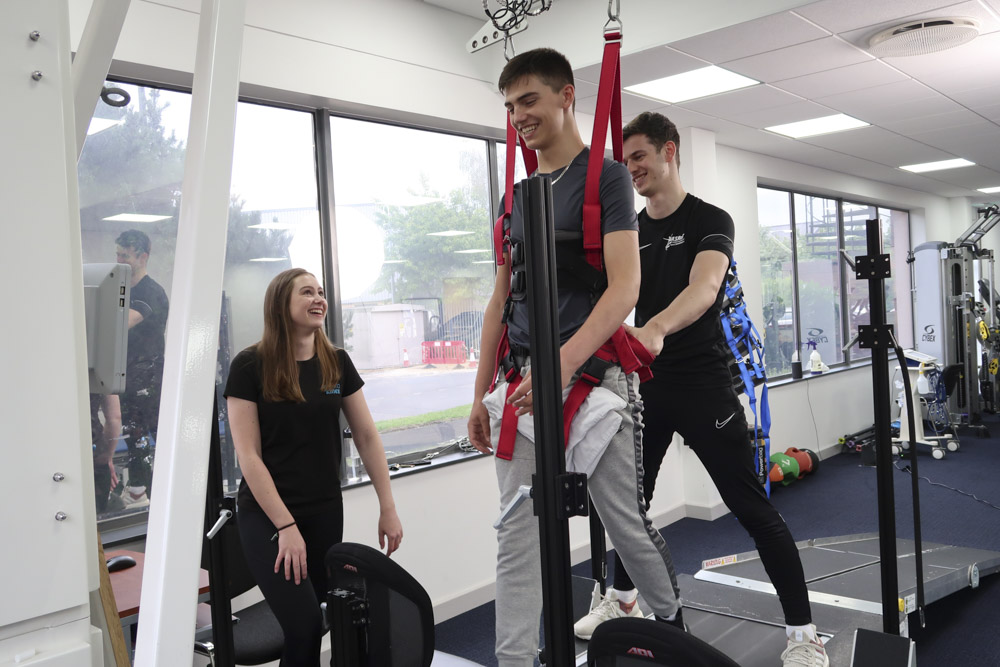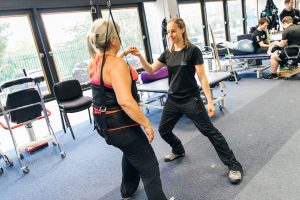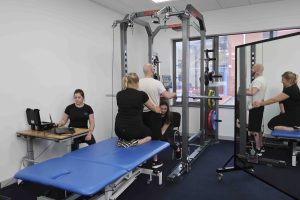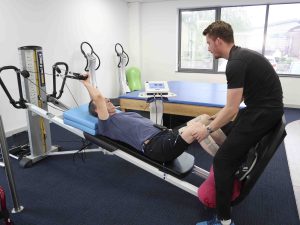I’d like to think that even if I hadn’t suffered a life-changing spinal cord injury in 2009 that facilities such as Neurokinex would still exist today.
If it wasn’t me who fought for such specialist rehab to be made available, I sincerely hope someone else would have seen the need and opportunity.
As Neurokinex marks its 10th Anniversary in 2023, it’s a good time to reflect on how far we’ve come but, more importantly, to consider where we go next. For although we have achieved a great deal in terms of offering specialist rehab for spinal cord injury, 10 years in, we’re just getting started.
Don’t get me wrong, compared to the rehab options I faced when I was discharged from hospital, spinal cord injury rehab has come on in leaps and bounds. The knowledge, science, application of skills and optimism behind spinal cord stimulation has come a very long way in the last decade. But there is a lot more that can be done to facilitate greater recovery and quality of life for the spinal cord injured community.
Help was desperately needed
Leaving a spinal rehabilitation centre in 2011, like a great many others, I was left wondering: ‘What now?’ The care had been tremendous but it then stopped. I was left realising that there was no organisation which would be able to offer me what I needed on a lifelong basis. Things were happening in Russia, Australia and the US, so I knew it was possible. But nothing much was available in the UK. Initial talks with spinal injury centres made it clear that they weren’t going to get involved in ‘community rehab’. If they wouldn’t, then it was down to testing and developing ideas with other stakeholders in an attempt to garner interest and investment. I learned that it is far from unusual for people suddenly in my position to overestimate what could be done…
The early days
Roll on to 2013 and the first Neurokinex facility opened in Watford. While fantastic, it wasn’t without its issues. The first thing that struck home was a problem with the flow of clients. We had no marketing and spinal injury centres didn’t want to signpost us as they didn’t know what we were like and couldn’t see this ‘not for profit’ approach. Not only that, but the case managers who handle the insurance-based cases didn’t know anything about us either. Having no clients was, obviously, a pretty big issue which had to be addressed immediately.
Overcoming barriers
To help get people started on their rehab journey with us, we launched the Step Up Scheme which provided six free sessions to people who had been discharged from spinal injury units. We also brought on board Jane Symonds, from the London Spinal Injury Centre at Stanmore, who expertise and reputation helped us become accepted and recognised by the units within the UK.
Ten Year Timeline
We launched an internship programme with the first cohort arriving in 2014. Our interns bring great energy to our work and are a vital part of our staffing and progression. Many, I’m pleased to say, return after graduating to work with us which tells its own story. With clients coming through the door and an enthusiastic young team, Neurokinex started going places. Literally. We opened centres in Bristol and at Gatwick.
Soon afterwards, we gained charitable status in 2016 and were honoured that David Smith OBE, double gold medal winning paralympic rower at the London Games in 2012 became both our client and ambassador.
Things continued to expand. We collaborated with international organisations to deliver our programmes, whilst also working with University College London on a research study.
In 2016 we were granted affiliate status with the extraordinary NeuroRecovery Network. As the first – and only – affiliate in Europe, this not only gave our credibility a massive boost, it brought genuinely ground-breaking rehab protocols to UK clients.
The final piece of the jigsaw came in the shape of Neurokinex Kids – our specialist paediatric site at Gatwick. We had been treating youngsters from the outset but to have a dedicated space full of colour, light, kid-sized kit and joy was wonderful. Matthew Reeve – son of the late Christopher Reeve whose vision and pioneering work into spinal cord injury rehab is legendary – gave us the honour of opening ‘NK Kids’ and it remains one of my personal highlights.
Another came at the end of 2016 when Neurokinex won the National Fitness Best Rehab award. That recognition was so important to us for two reasons. Firstly, all the hard work and achievements of our outstanding team had been recognised very publicly. Secondly, it showcased the unique way we work and brought us to the attention of the physical activity sector, with whom we align much more closely than ‘traditional’ rehab providers.
2020 saw our biggest challenge of all when Covid hit. These were some of the hardest months for our business but we made it through. I thank my team, our clients, stakeholders and supporters for staying loyal to us, adapting alongside us and returning when they were able.
Shifting the paradigm
It’s been no easy ride these last 10 years but it’s been worth it to change the lives of thousands of people. Great change was needed when we started Neurokinex and we did this by shifting the paradigm. That’s not just me saying this: our competitors tell us that is what we did.
What next for Neurokinex?
We will continue to learn, grow and thrive. Very soon, spinal cord stimulation therapy will be commercially available and we have a laser focus on this USP alongside our Activity Based Rehabilitation protocol.
I envisage that the next 10 years will see us:
- Make the very best use of our charitable status to safeguard our services, invest in more developments, train more staff and make more progress
- Fight on all fronts to ensure people’s #Right2Rehab
- Transform our own data collation, curation and analytics to allow us to make better data-driven decisions
- Invest in new facilities across the country, starting in Leeds
- Increase our footfall at each centre
As I reflect on 10 years since Neurokinex opened its doors I’m reminded that what we have is really precious. We must keep investing in our work and keep believing in its potential to improve the lives of people living with a spinal cord injury.




